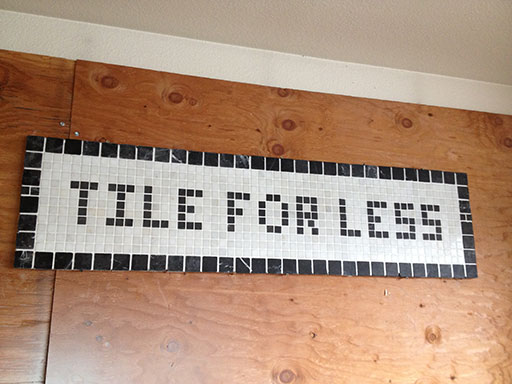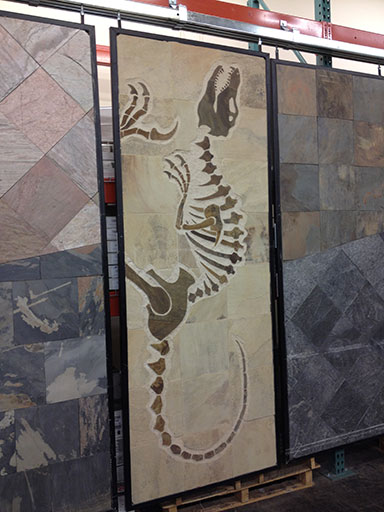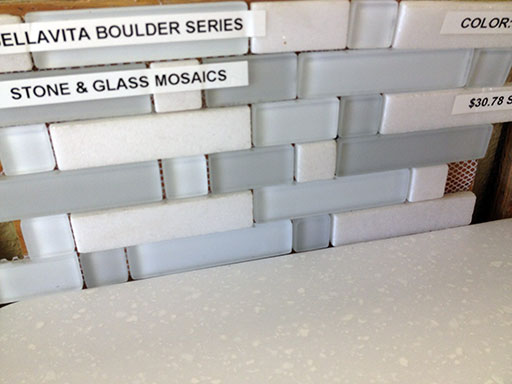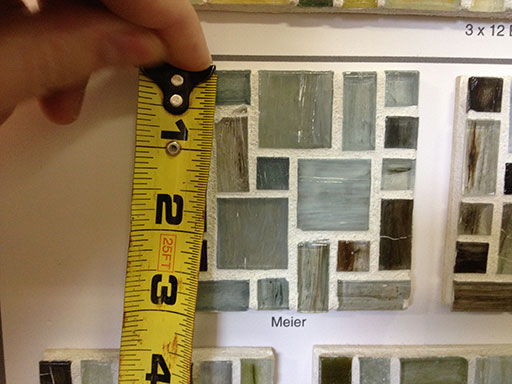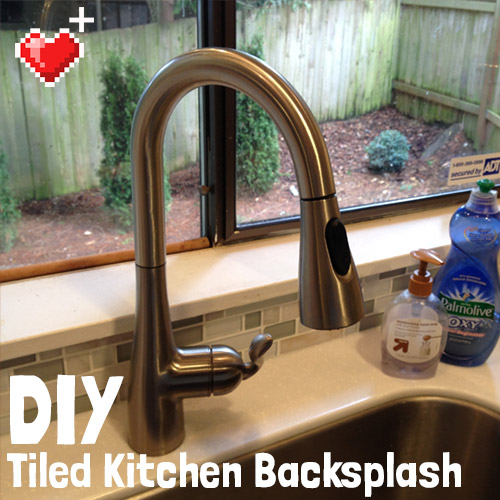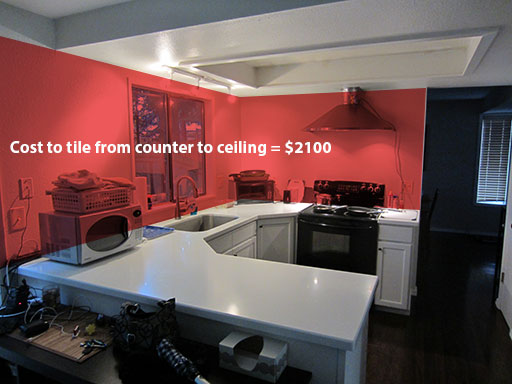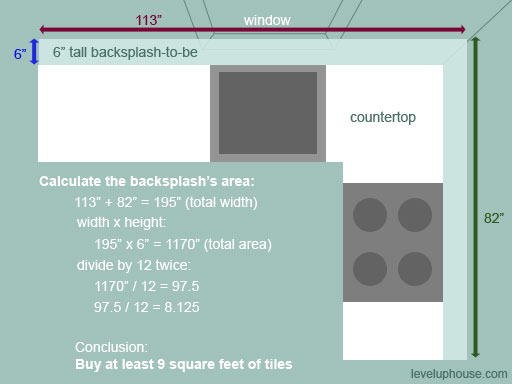A DIY kitchen backsplash is one of those projects where most of the work is in the planning and preparation. The actual process of sticking the tiles to the wall took less than two hours. Installing backsplash tiles can get tense – Will the tiles fit? Do we have enough of them? Hurry, the mortar is drying! But thanks to our (my) careful (OCD level) planning, sticking tiles onto the wall was a success!
Catch up on our DIY kitchen backsplash series through these links:
- Part 1 – Planning a DIY Kitchen Backsplash
- Part 2 – Choosing the Right Tiles for your DIY Kitchen Backsplash
- Part 3 – DIY Kitchen Backsplash Supply List
- Part 4 – Installing Backsplash Tiles (You are here)
- Part 5 – Grouting Backsplash Tiles
Drywall Surface Preparation
We degreased the painted drywall we’d be tiling over with a spray bottle of Bix TSP and a towel. Just spray it on and wipe – super simple.
Cutting the Tile Sheets
Note to self (and everyone else): cut your sheets to size and trim the excess along the edge before you mix your mortar.
Testing the Arrangement
A few days before our mortar party I cut up and laid out all the tiles on the living room floor (our hardly-furnished room comes in handy sometimes!).
Testing the arrangement was good for seeing and fixing unwanted patterns and ensuring there was enough tile (for the third time).
Masking Off the Work Area
If you thought you were ready to get to work, think again! Next up is masking off your work area with painter’s tape. This was a good idea, don’t skip this step. Keeping your mortar contained to a nice little mortar playpen will save you a ton of tedious scraping and repainting later.

Before you spread any mortar, mask off the work area with painter’s tape. This will make cleaning up your walls a lot easier.
Mixing the Mortar
Finally, a step that makes it look like we might actually put tiles on this wall!
The box of mortar promised 20 sq feet, so we guessed that we would need half of its contents for our 8 sq feet project. We used our kitchen scale to weigh out 2.1 lbs of the mortar and halved the liquid measurement. Everything went into our 2-gallon bucket for hand mixing with a metal scraper (the paint stick pictured was useless for stirring).
Mixing mortar got tiring, so I was glad to take turns with Jim.

Mixing mortar with a metal scraper in a big plastic bucket. (The paint stick was uselessly weak for this task.)
We let our tile batter sit 5-10 minutes as per the box’s instructions and then mixed it again. Done!
The sheer amount of steps pictured on the box had me worried at first, but mixing mortar was butt simple, probably the easiest part of this whole project. If you can make a brownies from a box mix, you can make mortar. Tasy, tasty mortar.
Applying Mortar to Wall
Grab a glob and put it on the wall. Repeat x 100. Use the v-notched trowel to carve lines (and if you have time, dirty words or pictures) into your mortar. Keep the mortar layer thick enough to fully cover the wall, but no thicker than that.
The grooves will help the tiles adhere without a ton of excess oozing out when you press tiles into the mortar.
Where to Start Tiling?
The corner seemed like a good place to start because the interior corner is inherently trickier than anywhere else we’ll be tiling. We wanted both sheets to touch in the corner but not overlap. We had measured each wall independently, not realizing we were expecting both sets of tiles to go all the way to the edge – oops.
Here’s how the tiles fit together in the corner:
Tiling
Putting sheets on the wall was straightforward and quick from here. We used the level to check our work as we went. It’s ironic that the part of this project that most looks like actually tiling a backsplash was probably 10% of the total time spent.
Most of the time went into filling the little holes with “one off” tiles.
Filling Gaps
To fill the gaps that inevitably occured, we used the 1×1 squares and the 2×1 rectangles. The gap-patching process was simple:
- Cut the “one off” tile free from the mesh and trim excess mesh around edge
- Butter the backside of a tile with a thin layer of mortar
- Plug the tile into the gap
- Mush it around until it’s level and evenly spaced from tiles around it

Our backsplash had a number of “holes” in it from too-long pieces having to be removed in order to fit to wall edges, corners, and the window ledge. 1×1 and 1×2 pieces were used to fill those gaps.
Tiling Behind the Range Oven
 Our current range oven has a big built-in backsplash (with control panel), but we’d like to upgrade our range to a gas model with controls in front (the GE Cafe is our favorite pick right now).
Our current range oven has a big built-in backsplash (with control panel), but we’d like to upgrade our range to a gas model with controls in front (the GE Cafe is our favorite pick right now).
The “controls in front” type of range typically lacks a built-in backsplash, so we continued our tiled backsplash behind our existing range, even though it won’t be seen until we upgrade. We even tiled a couple inches below the top of the range to keep it looking seamless behind the appliance.
Letting it Dry
The easiest step of all.

With all the tiles mortared to the wall, all we had to do was wait 24 hours before the grouting could begin.
We’ll be back in a day to grout and finish ‘er off!






























